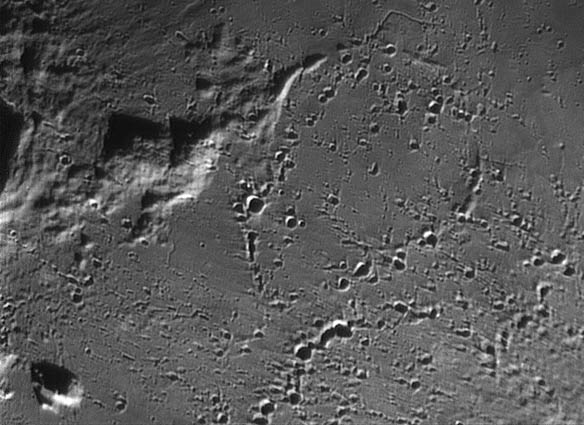Floods and Buckshot

Explanation:
Stadius is one of the Moons most famous odd formations. Long ago it was said to be a ring of pits, almost certainly of volcanic origin. But even a casual glance reveals that is an inaccurate description and an unjustified interpretation. The craters near Stadius do not form a ring, but do commonly touch and make many short lines. This remarkable image also shows another key characteristic of these pits that was not visible on pre-spacecraft photos. Many of the craters, especially those in lines, are sources of short ridges, sometimes two ridges that make a vee. Like arrowheads, this herringbone pattern points back to the source Copernicus. Nearly all of the craters on this image are secondaries formed by clots of boulders and small mountains ejected by the formation of Copernicus. The lines of craters result from near simultaneous impacts, and interference of the ejecta from the secondaries creates the Vs. Underneath this ballistic buckshot is Stadius remnant of a 69 km wide impact crater that has been buried to its rim crests by mare lavas. Stadius is another example of a crater undeserving of a name.
—
Chuck Wood
Technical Details:
18" Starmaster Newtonian Reflector + DMK-21F04 Firewire Camera, 30FPS
Related Links:
Rukl Plate 32
